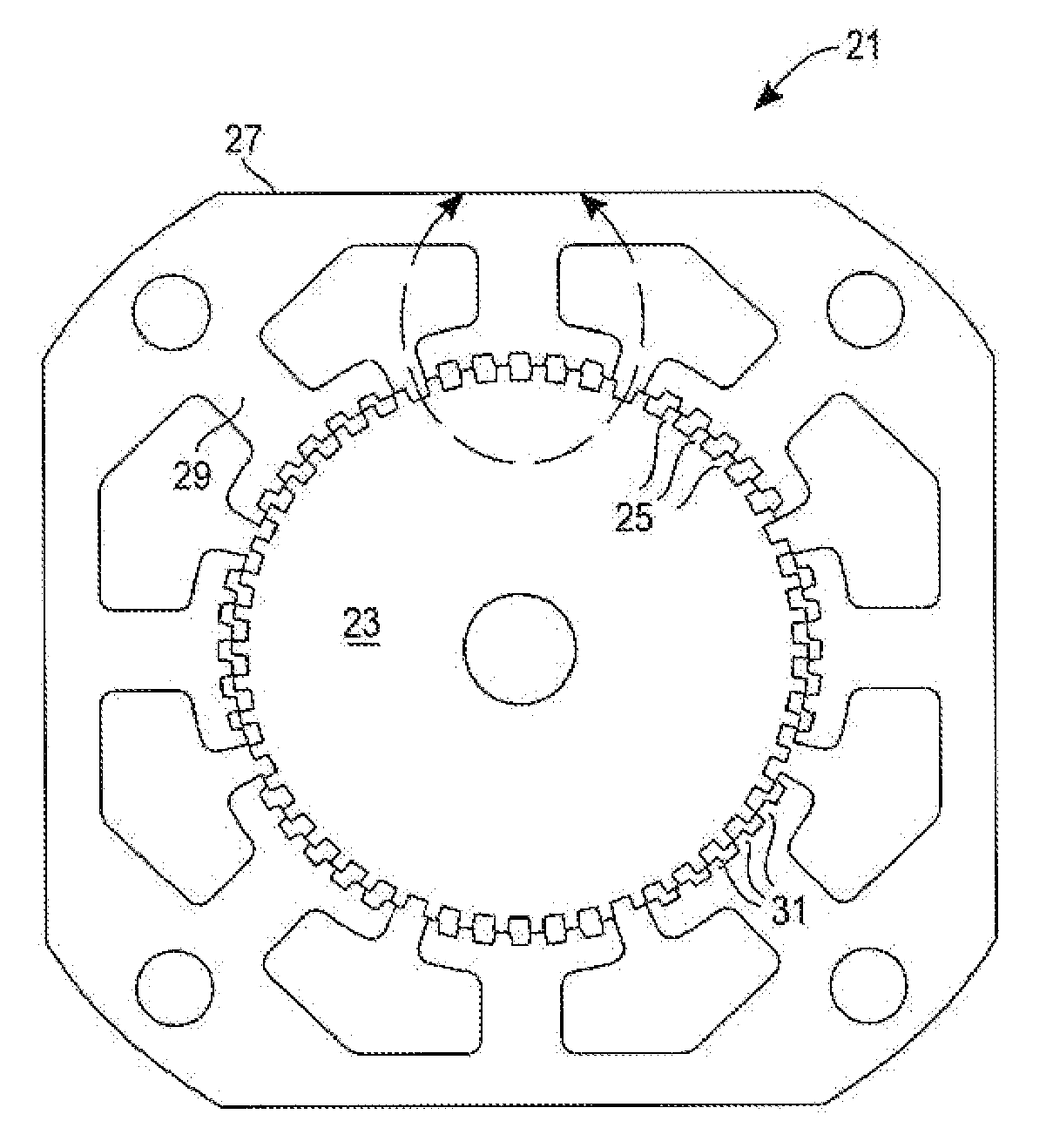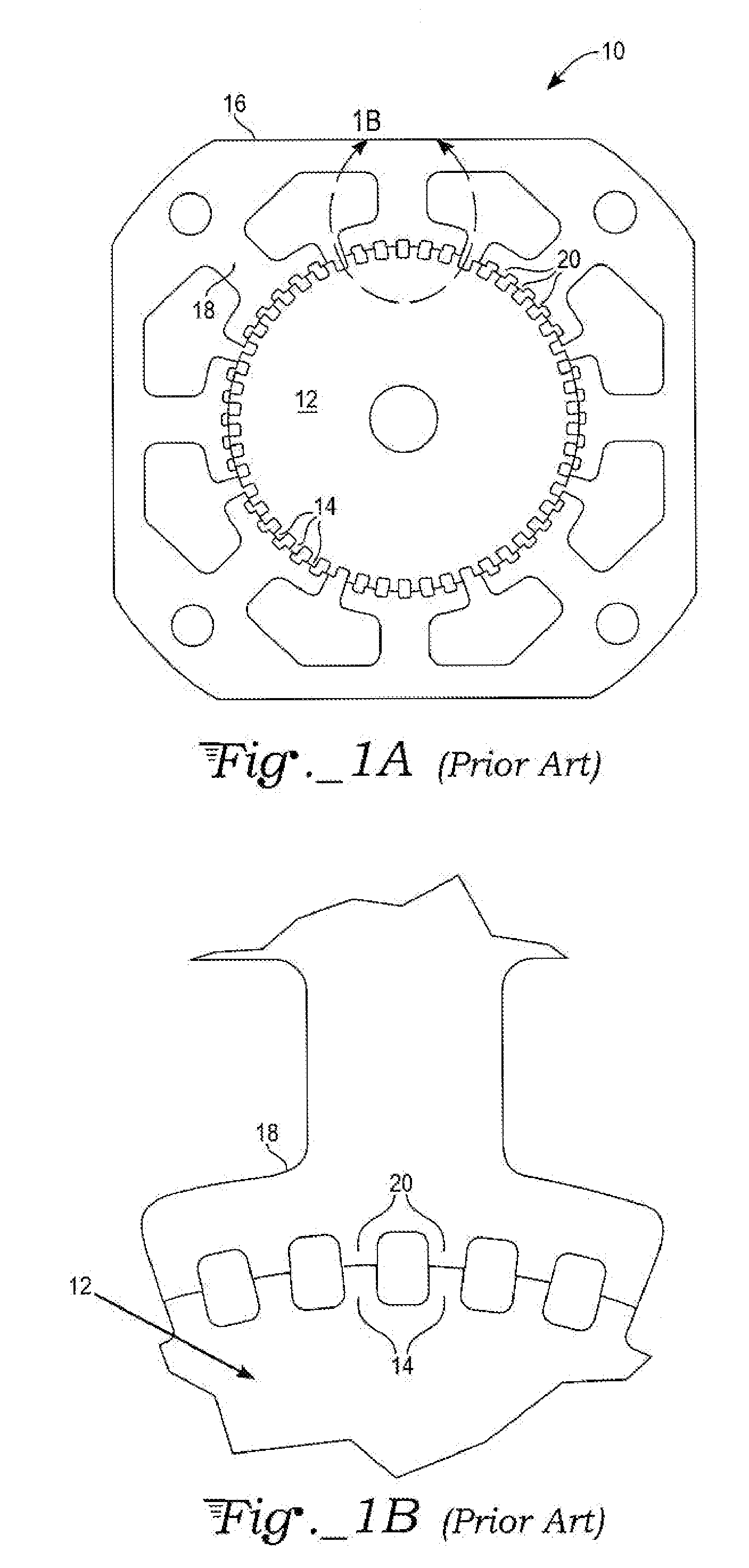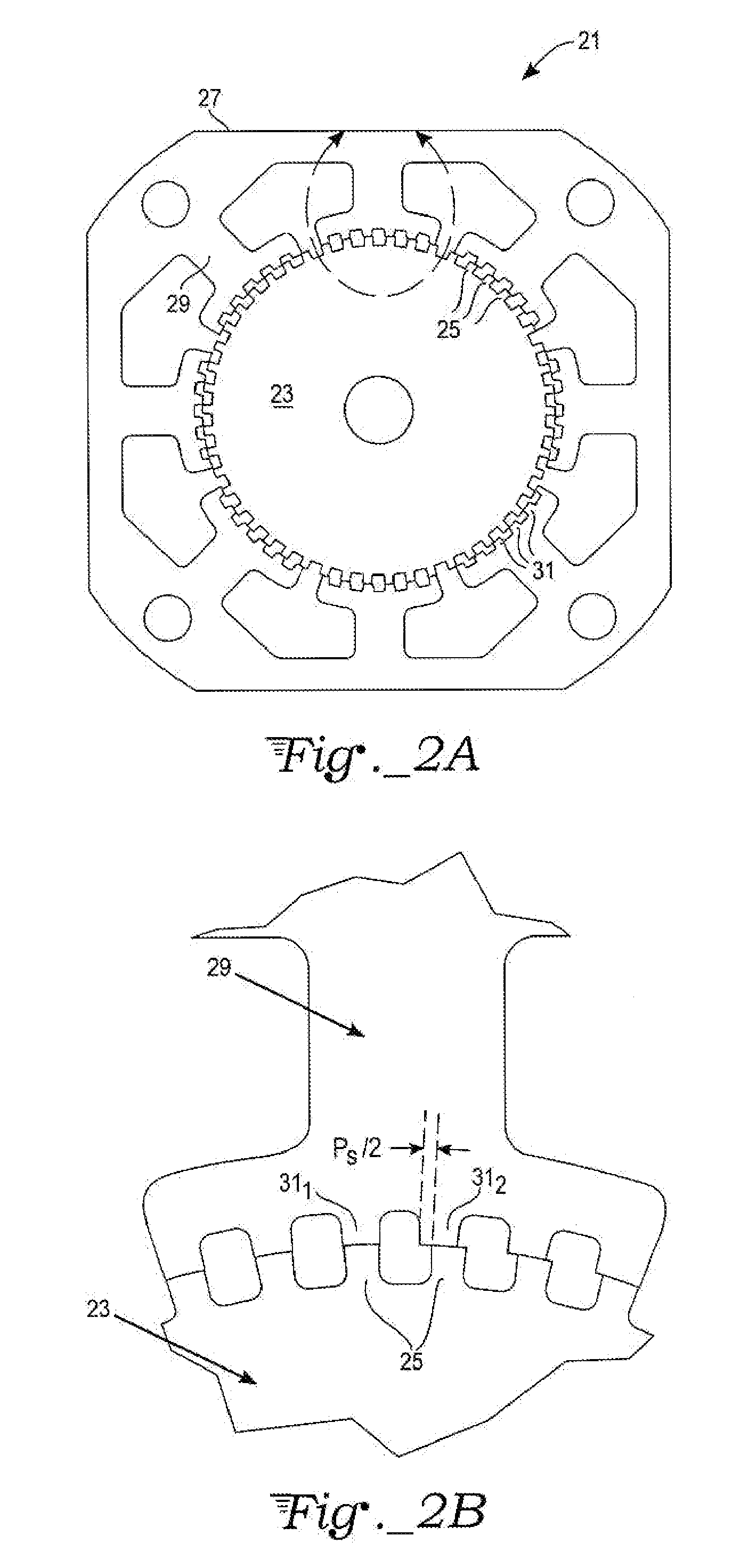Accurate microstepping motor
a micro-stepping motor and accurate technology, applied in the field of accurate micro-stepping motors, can solve the problems of increasing the load of the motor, unable to improve the step accuracy, and the micro-steps are not guaranteed to be equal in size, so as to reduce the detent torque, increase the detent position, and pass easily
- Summary
- Abstract
- Description
- Claims
- Application Information
AI Technical Summary
Benefits of technology
Problems solved by technology
Method used
Image
Examples
example 1
[0027] A 7.2° standard stator tooth pitch angle corresponds to a 1.8° 2-phase bi-polar (or 4-phase unipolar) motor, a 1.2° 3-phase bipolar (or 6-phase unipolar) motor, a 0.72° 5-phase bipolar (or 10-phase unipolar) motor, where 1.8°, 1.2°, and 0.72° refer to the full step angle θ of the respective motors. For a 1.8° 2-phase bipolar (or 4-phase unipolar) motor, the stator teeth have tooth separations Pe between the two groups of stator teeth of 7.2°±1.8° / 2=7.2°±0.9°; i.e., alternately 6.3° and 8.1°. For a 1.2° 3-phase bipolar (or 6-phase unipolar) motor, the stator teeth have tooth separations Pe between the two groups of stator teeth of 7.2°±1.2° / 2=7.2°±0.6°; i.e., alternately 6.6° and 7.8°. And for a 0.72° 5-phase bipsolar (or 10-phase unipolar) motor, the stator teeth have tooth separations Pe between the two groups of stator teeth of 7:2°±0.72° / 2=7.2°±0.36°; i.e., alternately 6.84° and 7.56°.
[0028] With reference to FIGS. 4A and 4B, another exemplary stepper motor 41 in accordan...
example 2
[0029] As before, a 7.2° standard stator tooth pitch angle corresponds to a 1.8° 2-phase bipolar (or 4-phase unipolar) motor, a 1.2° 3-phase bipolar (or 6-phase unipolar) motor, a 0.72° 5-phase bipolar (or 10-phase unipolar) motor, where 1.8°, 1.2°, and 0.72° refer to the full step angle θ of the respective motors. For a 1.8° 2-phase bipolar (or 4-phase unipolar) motor, the stator teeth have tooth separations Po for the three groups of stator teeth of 7.2°±0.9° / 2 7.2°±0.45°=6.75° or 7.65°. For a 1.2° 3-phase bipolar (or 6-phase unipolar) motor, the stator teeth have tooth separations Po between the two groups of stator teeth of 7.2°±0.6° / 2=7.2°±0.3°=6.9° or 7.5°. And for a 0.72° 5-phase bipolar (or 10-phase unipolar) motor, the stator teeth have tooth separations Po between the two groups of stator teeth of 7.2°±0.36° / 2=7.2°±0.18°=7.02° or 7.38°.
[0030] With reference to FIG. 5, the effect of the tooth offsets is to double the number of detent positions while reducing the amount of ...
PUM
 Login to View More
Login to View More Abstract
Description
Claims
Application Information
 Login to View More
Login to View More - R&D
- Intellectual Property
- Life Sciences
- Materials
- Tech Scout
- Unparalleled Data Quality
- Higher Quality Content
- 60% Fewer Hallucinations
Browse by: Latest US Patents, China's latest patents, Technical Efficacy Thesaurus, Application Domain, Technology Topic, Popular Technical Reports.
© 2025 PatSnap. All rights reserved.Legal|Privacy policy|Modern Slavery Act Transparency Statement|Sitemap|About US| Contact US: help@patsnap.com



